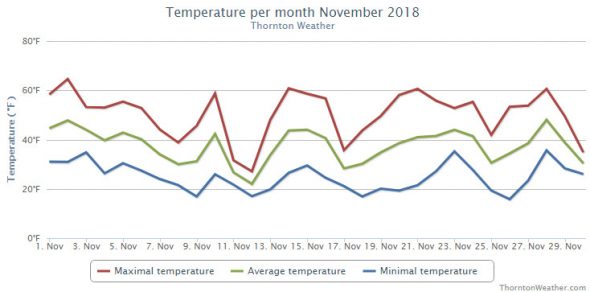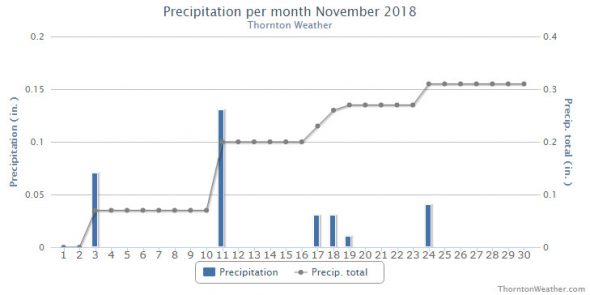As we enter Denver’s second snowiest month, we of course see plenty of events involving that dominant weather condition. Sadly we also see two occasions when the winter-like weather turned deadly.
From the National Weather Service:
From the 29th to the 1st:
In 1972…heavy snowfall totaled 15.5 inches at Stapleton International Airport. However…the heaviest snow occurred on Halloween night when 7 inches fell on trick-or-treaters during a short 3-hour period. I-25 was closed south of Denver. North winds gusting to 29 mph caused some blowing snow on the 1st. The snow started late on the 29th and ended during the mid afternoon on the 1st. The greatest snow depth on the ground at Stapleton International Airport was 13 inches on the 1st.
From the 31st to the 1st:
In 1951…6.4 inches of snowfall were measured at Stapleton Airport.
In 1989…a Halloween storm dropped 3 to 6 inches of snow on metro Denver with the adjacent foothills receiving 5 to 10 inches. Snowfall totaled 4.5 inches at Stapleton International Airport…where north winds gusted to 31 mph on the 31st. Most of the snow fell on the evening of the 31st…but the storm left icy streets throughout metro Denver on the morning of the 1st…making it a “spooky” commute for many motorists.
In 2004…heavy snow fell in and near the foothills of Jefferson and Douglas counties. Storm total snowfall included: 14.5 inches in Aspen Park…10 inches at Roxborough State Park and near Sedalia…8 inches near Bergen Park…and 7 inches in Highlands Ranch. Snowfall totaled only 3.2 inches in the Denver Stapleton area. Post-frontal northeast winds gusted to 41 mph at Denver International Airport.
On the 1st:
In 1896…northwest Chinook winds sustained to 40 mph with gusts to 46 mph warmed the temperature to a high of 60 degrees in the city.
In 1973…wind gusts to 92 mph were recorded in Boulder. West winds gusted to 41 mph at Stapleton International Airport where the Chinook winds warmed the temperature to a high of 70 degrees.
In 1989…a 39-year-old Lakewood man in a motorized wheelchair was found dead of exposure early in the morning after an overnight snowfall dumped 3 to 6 inches of snow across metro Denver.
From the 1st to the 2nd:
In 1892…snowfall totaled 5.0 inches in downtown Denver. This was the only snow of the month.
In 1956…heavy snowfall totaled 7.0 inches at Stapleton Airport. The storm was accompanied by much blowing and drifting snow. North winds gusted to 47 mph.
In 1991…the storm system which hit the Front Range at the end of October finished the job during the start of November. Six inches of new snow were recorded at both Rollinsville and Morrison…while 2.9 inches of snow fell at Stapleton International Airport where northeast winds gusted to 17 mph. The temperature climbed to a high of only 19 degrees on the 2nd…setting a record low maximum for the date.
In 1995…a winter storm dropped 5 to 8 inches of snow in the Front Range foothills. The exception was at Golden gate canyon where a foot of new snow was measured. Icy roads…fog…and blowing snow along I-70 in the foothills west of Denver caused dozens of accidents. One man was killed when he lost control of his vehicle and was ejected when his truck hit a median and rolled over. At least 20 other accidents involved minor injuries. Only 1.0 inch of snow fell at the site of the former Stapleton International Airport where some freezing rain also fell.
On the 2nd:
In 1939…a trace of snow fell over downtown Denver. This snow…along with a trace of snow on the 9th…was the only snow of the month…ranking it…along with other months…the second least snowiest November on record.
In 1967…post-cold frontal heavy snowfall totaled 6.2 inches at Stapleton International Airport where north winds gusted to 29 mph…briefly reducing the visibility to 1/8 mile.
In 1992…the first major snowfall of the season dumped 4.6 inches of snow at Stapleton International Airport where north winds gusted to 26 mph. Heavier amounts of snow fell in and near the foothills with 8 inches at Conifer… Empire…and bailey…6 inches at Rollinsville and Golden Gate Canyon…and 4 inches at Morrison and Wheat Ridge.
In 2011…a storm system brought another around of moderate to heavy snow to the region. Areas in and near the Front Range foothills and palmer divide were hit the hardest. Gusty winds also produced blizzard conditions at times along the Palmer Divide. In addition…the snow and blowing snow forced several school closures in Douglas and Weld counties. Snow drifts…from 1 to 3 feet deep were reported in the northern portion of Douglas and Elbert counties. Storm totals included: 14 inches…4 miles south of Boulder and 12.5 miles northwest of Golden…13 inches… 5 miles east-southeast of Aspen Springs; 12 inches near Allenspark and Parker; 11 inches…6 miles southwest of Castle Rock…Genesee… 9 miles north-northeast of Elizabeth…10 inches… 10 miles south-southeast of Buckley AFB. At the National Weather Service in Boulder… 7.9 inches of snow was recorded…with 4.5 inches observed at Denver International Airport.
From the 2nd to the 3rd:
In 1974…heavy snowfall totaled 6.1 inches at Stapleton International Airport where north winds gusted to 23 mph on the 3rd. Most of the snow fell on the 3rd. Maximum snow depth on the ground was 5 inches.
In 1990…a winter storm dumped 3 to 8 inches of heavy wet snow across metro Denver. In the foothills snow amounts ranged from 4 to 10 inches. Slushy snow and ice-covered roads snarled traffic. The snow…ice…and poor visibilities were blamed for numerous traffic accidents. Low clouds… Fog…and snow delayed air traffic at Stapleton International Airport for at least 90 minutes on the afternoon of the 2nd. Snowfall totaled 5.4 inches at Stapleton International Airport where north winds gusted to 21 mph.
From the 2nd to the 5th:
In 1946…a major snow storm dumped 30.4 inches of heavy snowfall downtown and 31.0 inches at Stapleton Airport. The winter storm closed schools and disrupted all forms of transportation in the city. The greatest depth of snow on the ground was 28 inches at the airport. The duration of the snowfall…from 4:22 am on the 2nd to 3:08 am on the 5th… A total of 70 hours and 46 minutes…is the second longest period of continuous precipitation on record and the second heaviest snowfall of record at the time in Denver. The 17.7 inches of snowfall on the 2nd and 3rd was the greatest 24- hour snowfall ever recorded during the month of November. Buses and street cars had a difficult time…and many cars were abandoned along roadsides and streets for several days. Secondary roads in rural areas were blocked for 2 to 3 weeks. Several buildings in the city collapsed or were damaged from the weight of the heavy snow. Football games were canceled. Livestock losses were high over eastern Colorado. The precipitation from this storm alone exceeded the greatest amount ever recorded in Denver during the entire month of November previously. The precipitation recorded downtown was 2.03 inches…and the previous record for the entire month of November was 1.95 inches in 1922. North winds were sustained to 26 mph on the 2nd.
Continue reading November 1 to November 7: This week in Denver weather history


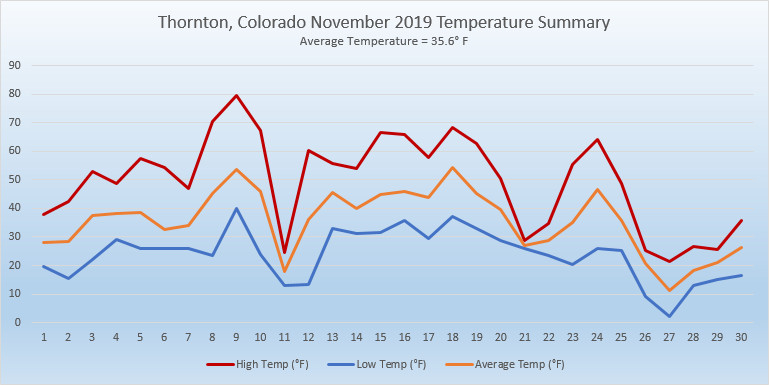
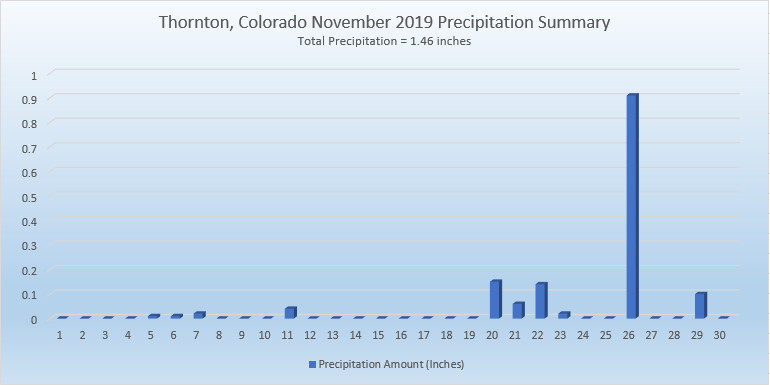

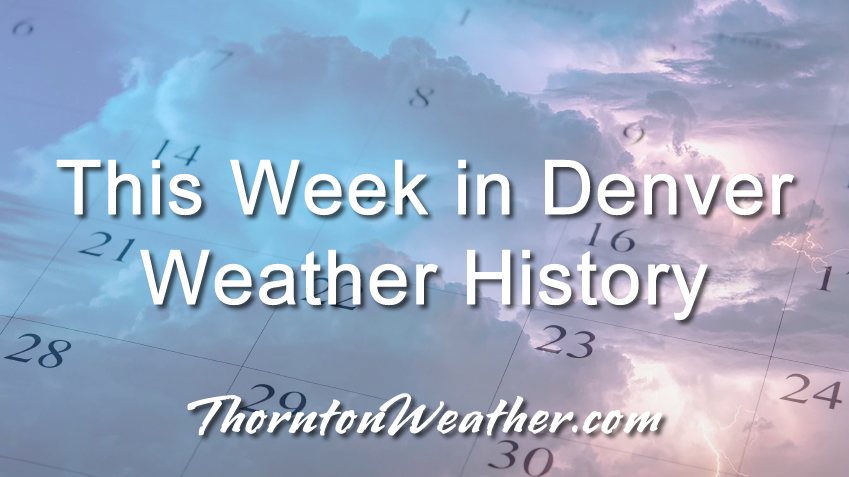
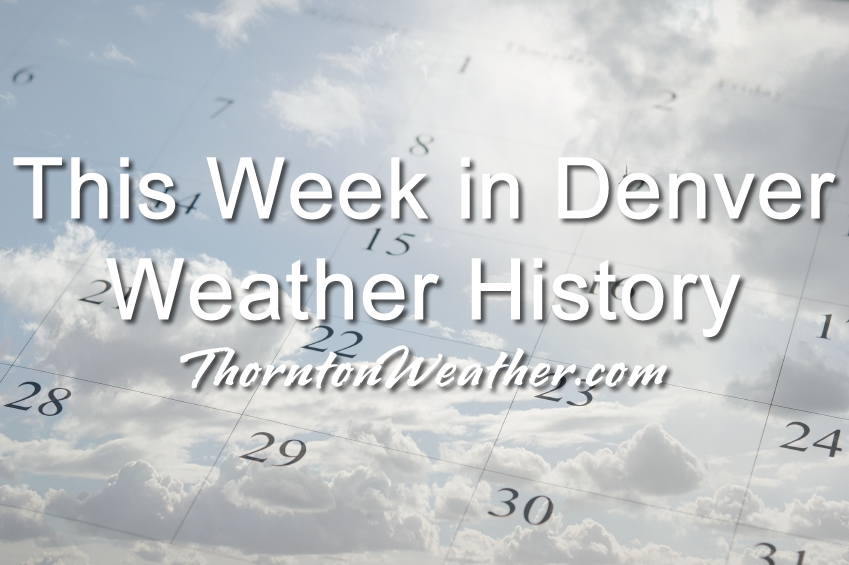
 The weather during the month of November in Denver metro area can offer just about anything. While it is normally a quiet month, it can be prone to extremes.
The weather during the month of November in Denver metro area can offer just about anything. While it is normally a quiet month, it can be prone to extremes.